Richard Hudnut
Continue to: Richard Hudnut (1920-1940)
Richard Alexander Hudnut was born in Philadelphia but following his family’s move to Brooklyn he went to school there, later enrolling at the Brooklyn Polytechnic Institute. Some have suggested he went to Princeton but this seems to be incorrect, possibly due to confusion with his younger brother William who graduated from Princeton College in 1886 (Wessell, 1961, p. 156).
Richard Hudnut’s father, Alexander Hudnut [c.1830-1900], operated a series of drug stores in Brooklyn, first in Court Street from 1855, then on the junction of Fulton and Washington Streets, before settling at 218 Broadway in the new Herald Building in 1867. After he inaugurated the idea of the all-night drug store, Hudnut’s Pharmacy became the meeting place for night-owls like newspaper reporters, actors and drama critics who selected drinks from one of the largest soda fountains in New York.
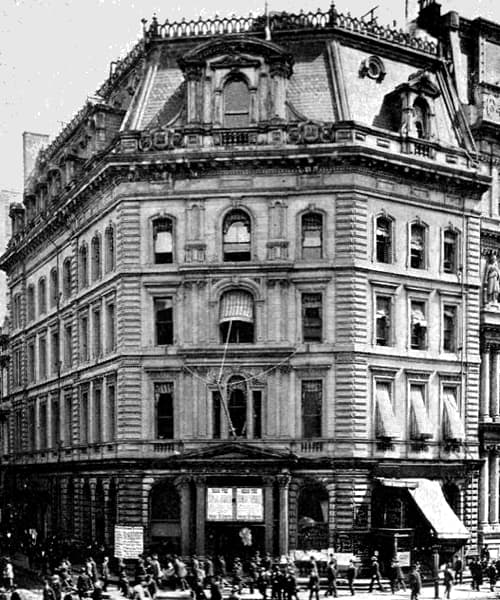
Above: 1875 The Herald Building on the corner of Ann Street and Broadway, sometimes called the Bennett Building after the Herald’s famous editor, James Gordon Bennett. It was erected in 1866 on the site of the Barnum’s Museum which had burnt down in 1865. The Hudnut Pharmacy awning at 218 Broadway can be seen on the right of the building’s portico entrance.
The pharmacy became more widely known when Alexander hung a boxed-in thermometer at the front of the store. This was used for ‘official unofficial’ temperature readings for New York by various newspapers and made Hudnut’s pharmacy a household name.
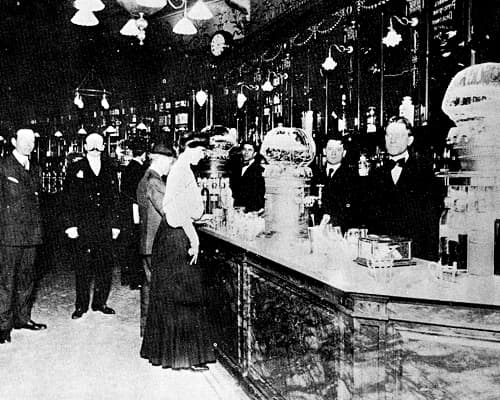
Above: The interior of a Hudnut Pharmacy, possibly 925 Broadway, with Richard Hudnut standing, second from the left.
In 1895, the Herald Building was pulled down to make way for a 25-storey skyscraper. Alexander Hudnut moved his pharmacy to 205 Broadway and also opened a second pharmacy uptown at 1201 Broadway. The uptown store was unprofitable and was closed in 1898 with losses of US$17,000. The following year Alexander Hudnut sold his pharmacy business to Henry L. Cutler for US$200,000.
Richard Hudnut began working in his father’s drug store at 218 Broadway in 1873 but opened his own pharmacy at 925 Broadway in 1899, the year his father sold his business. This meant there were two Hudnut pharmacies in New York for many years; one operated by Richard Hudnut uptown at 925 Broadway, the other downtown at 207 Broadway, later owned by Frederick F. Anness and George H. Bancroft. The two firms co-existed amicably, a situation made easier by the fact that Richard Hudnut did not engage in widespread advertising.
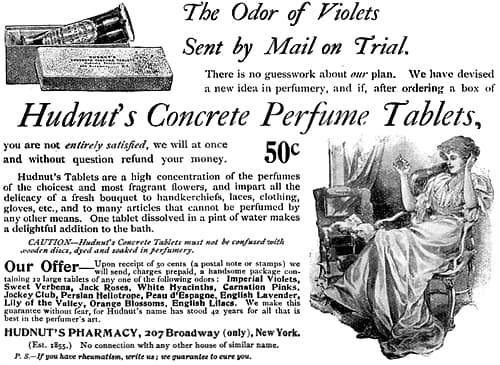
Above: 1897 Hudnut’s Concrete Perfume Tablets. This is NOT Richard Hudnut but rather advertising from the Hudnut Pharmacy at 207 Broadway. It includes the disclaimer “No connection with any other house of similar name”.
Exactly how or why Richard Hudnut began to make scents is unclear. His brother William notes that their father played no part in their development and Richard’s first fragrances, released in 1880 well before he set up on his own, were also formulated before he visited France to see how things were done in Grasse.
Rather than advertise through newspapers or magazines, Richard Hudnut promoted his perfumes and cosmetics by distributing booklets containing details of his various preparations to prospective customers. This was designed to give his formulations an air of exclusivity, but meant that most early advertisements for Richard Hudnut products were placed by the stores that sold them. Industry publications were a different matter and Hudnut advertised widely in trade magazines for new outlets to sell his products.
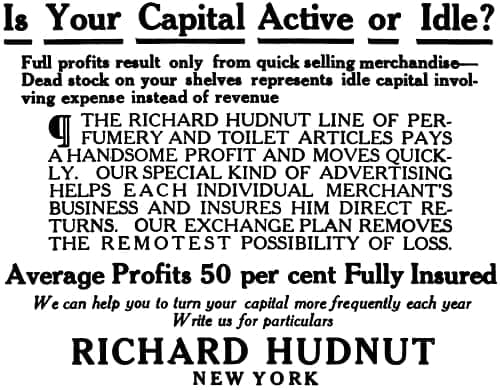
Above: 1910 Richard Hudnut trade advertisement.
Hudnut was concerned that his perfumes, cosmetics and other products were not ‘cheapened’ by discounting. He insisted on a strict price maintenance policy and all retailers that carried his products had to sign an agreement to that effect.

Above: 1911 The agreement used by Richard Hudnut to stop price cutting. Retailers who broke it were likely to find all their stock bought up and further supplies cut off (Galloway & Harmon, 1911, p. 216). This price-control policy would lead to charges being brought against the company by the American Federal Government in 1922.
Hudnut was not the only American cosmetic retailer to insist on price controls. The makers of Crême Elcaya and Armand Complexion Powder did the same
By 1900, Hudnut had built up a sizeable range and his products were being sold across the United States. As well as perfumes, toilet waters, cologne waters, sachets, scented tablets, hair preparations, tooth powders, tooth washes, and soaps. There were also toilet and face powders, skin creams and other cosmetics.
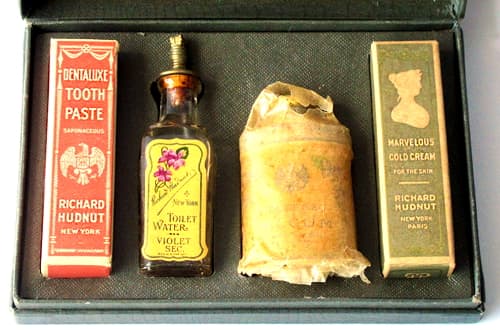
Above: Early Richard Hudnut Travelette Box containing Dentaluxe Toothpaste (tube), Violet Sec Toilet Water (bottle), Violet Sec Talcum Powder (tin) and Marvelous Cold Cream (tube). Travelette boxes were first introduced in 1916.
Hudnut’s products were sold under a wide variety of names. He made some attempt to develop the brand name ‘Hudnutine’ as in Hudnutine Face Powder, Hudnutine Rice Powder, Hudnutine Toilet Cerate, Royal Hudnutine Toilet Water, Hudnutine Tooth Paste and Hudnutine Tooth Wash. However, he also followed the tradition used by perfumers that based products around fragrances. For example, Violet Sec was sold as a perfume and toilet water, but the fragrance was also used in Violet Sec Cream, Face Powder, Sachet Powder, Leaves, Lip Rouge, Bath Salts, Soap, Rice Powder, Almond Meal, and Talcum.
By 1905, rising demand meant that the company needed to expand its operations. Land was acquired at 115-117 East 29th Street, the two dwellings occupying it were demolished and a new six-storey building containing space for offices, manufacturing, shipping, and a showroom was built on the site by 1906.
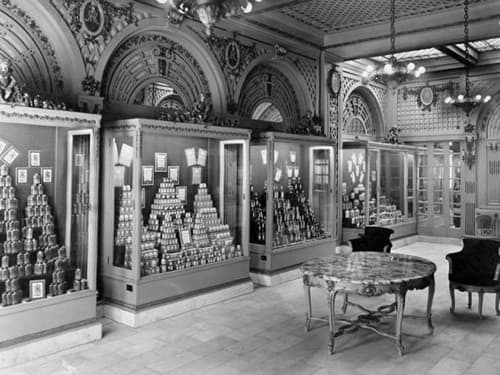
Above: c.1908 Interior of the Richard Hudnut showroom designed by Edmund Ellis at 115-117 East 29th Street, New York.
In 1909, the company incorporated and began to expand overseas, starting with the appointment of American Drug Stores, based at 4 Northumberland Avenue, London, as their English agent. This was followed with the opening of a branch office at 22 Rue Augustine, Paris in 1912. Advertising in France wisely avoided perfumes and concentrated instead on promoting the Marvelous Cold Cream.
In 1911, manufacturing space at 115-117 East 29th Street was more than doubled and two floors of the Bush Terminal Building on East 29th Street – with its fully equipped, motor-truck delivery service – were rented to expedite shipping and to house a showroom and storage for stock.
By now, the direction of the business was clear and a decision was taken to retire the retail side of the business. In 1914, the Hudnut Pharmacy at 950 Broadway was closed and the stock and fittings were sold at auction to the C. & C. Pharmacy of Williamsburg.
Products
When he ran a pharmacy, Richard Hudnut was not beyond selling his own patent medicines such as Phosporine for general disability, and Marienbad Reduction Pills to cure obesity. However, his real interest was in making fragrances equal in quality to those produced in France. Knowing that price was also important, he helped reduce competition from foreign perfumes through his chairmanship of the Committee of Importations and Undervaluations for the Manufacturing Perfumer’s Association. Lobbying secured legislation that increased the duty on perfumes made overseas and eliminated tariffs on the imported raw materials used to make perfumes in the United States. This made foreign perfumes more expensive and local perfumes cheaper to make.
Richard Hudnut sold a wide range of concentrated perfumes, perfumes and toilet waters under names such as Soul of the Violet, Heart of the Heliotrope, Rose of Omar, Tenfold Lilac, Du Barry, Rose Rosée, Lily of the Valley, Gardenia, Nyra Wood Violet, White Rose, White Lilac, Sweet Orchid, Aimee, Virginia Rose, White Heliotrope, Monalisa, Violet Sec, White Heliotrope, Royal Hudnutine, Extreme Violet, Yanky Clover, Verveine, Three Flowers and Sandalwood. Three of these early fragrances are of particular importance to the story of Hudnut cosmetics – Violet Sec (1896), Du Barry (1900), and Three Flowers (1915).
Skin-care
Early Richard Hudnut skin creams included cerates, glycerine creams, and cucumber creams. Not all of these survived. For example, Hudnut introduced two new cold creams in 1902 – Marvelous Cold Cream and Perfectola Cold Cream – but only Marvelous stayed the distance. It was a mineral-based cold cream which could be used as a cleanser, skin protectant or powder base. Other skin creams sold before the First World War included Cucumber Cold Cream, an almond oil-based cold cream for use on injured or more delicate skins; Milk of Cucumbers and Orris, a skin protectant and powder base for oily skins; Violet Sec Crême, a glycerine-based cream for oily skins, skins that were inclined to be dry, and as a base for powder; and Toilet Cerate, marketed as a skin protectant.
Marvelous Cold Cream: “Marvelous Cold Cream has all the qualities most sought by fastidious women as an innocent unguent of rare effectiveness in soothing, healing and beautifying the skin. It will keep indefinitely without change and, entirely free from glycerine, is guaranteed not to promote the growth of down.”
Cucumber Cold Cream: “This preparation has a base of the finest Sweet Almond Oil, rarely employed by manufacturers on account of its high cost. It may be described as purely vegetal in character, entirely free from the mineral oils so generally used today in cold creams.”
Milk of Cucumbers and Orris: “Milk of Cucumbers and Orris contains a minute percentage of fatty matter, and even this is neutralized to such an extent as to make it, par excellance, the best of all liquid skin improvers, not only for oily skins, but for general day time use to soften and soothe the skin before applying powder, etc.”
Crême Violet Sec: “It contains no oily matter whatever, consequently it is most cleanly in use, and, being instantly absorbed by the skin, leaves no apparent trace.”
Toilet Cerate: “This most useful preparation is readily absorbed by the skin, and owing to this and certain other characteristics, it is particularly adapted to use as a massage cream, while as a general healing application to the skin when burned, irritated, chapped, inflamed, etc., it has no superior.”
See also: Cerates, Glycerine Creams and Cold Creams
Also see the company booklet: Beauty Book (1910)
Make-up
By 1915, Richard Hudnut’s range of face powders included Du Barry, Sweet Orchid, Gardenia, Violet Superba, Royal Hudnutine and Violet Sec. All the powders came in the same two or three shades – White, Flesh and Brunette, later extended to White, Natural, Rose and Brunette – but varied in their formulation not only their fragrance. For example, Hudnutine Face Powder was heavier than Violet Sec. Hudnut also made Blanc Mondain, a compact powder in White, Natural, Rachel, Rose, and Electrique shades, and Orchid Beauty White, a cream liquid white.
Hudnutine Face Powder: “This is a heavy and very effective powder which, while entirely harmless, has remarkable beautifying powers. Like all Richard Hudnut Powders it is sieved through fine silk so that it is absolutely impalpable.” Shades: White, Flesh and Brunette.
Violet Sec Face Powder: “ An exquisite production in the preparation of which, quality, odor and elegance have been the paramount consideration. The innocence, delicacy and freshness of this powder and the novel, beautiful and convenient manner in which it is boxed, make it a necessity as well as a luxury.” Shades: White, Flesh and Brunette.
Orchid Beauty White: “A harmless, instantaneous beautifier for the face, neck and arms suited to the requirements of society women who do not want exaggerated effects. It suffices to apply the cream with a small sponge and when dry, to rub the skin gently with a soft cloth or piece of chamois leather.” Shades: White, Flesh, Brunette.
See also: Liquid Face Powders
The Hudnut range of rouges included: Liquid Rouges – Permanent Rose Tint (Rose) and Liquid Face Rouge (Carmine); Dry Rouges – Rouge Mondain (Brunette), Rouge Mandarine (Orange), Vanity Rouge, Theatre Rouge and Modern Rouge (Brunette); and Rouge Leaves.
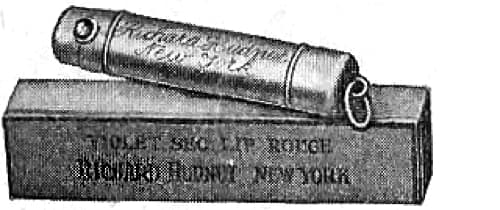
Above: 1919 Richard Hudnut Violet Sec Lip Rouge. The ring attachment allows the lipstick to be added to a chatelaine.
Hudnut also sold Stick Rouges for the lips – Violet Sec Lip Rouge and Permanent Lip Rouge – which suggests that he was one of the earliest American cosmetic manufacturers to make what we would now call a lipstick. He may also have been one of the first American cosmetic manufacturers to packaged his lipstick in a metal push-up case.

Above: 1919 Richard Hudnut Eyebrow Crayon.
Eye make-up was largely absent from Richard Hudnut’s product range. As far as I can tell he did not make a mascara at this time and only sold Eyebrow Crayons in shades of Black, Brown and Chestnut. This is understandable given that eyebrows were then considered a more important facial feature than eyelashes.
Manicure preparations
Richard Hudnut recommended Olive Oil Soap for the hands, Violet Sec Almond Meal for softening and whitening them, and Milk of Cucumber and Orris to keep them in good condition. Nails could be buffed using a powder polish Nailustre (1903), cake polish Marvelous Nail Polish (1907), or stick polish Nailstic (1914), but could also be painted with Hudnut’s Liquid Nail Enamel. He also made a Rouge Pomade to colour the nail plate pink, Cuticle Acid, an oxalic acid-based Cuticle Remover, and general manicuring equipment such as emery boards and orange sticks.
Nailustre: “After cleaning, clipping and filing the nails, all that is necessary is to apply a thin coating of Nailustre with the finger or a bit of cloth, rubbing to a brilliant polish with a chamois nail polisher.”
Marvelous Nail Polish: “[I]n cake form, for imparting gloss to the finger nails; in neat, convenient aluminum box.”
See also: Nail Powder Polishes and Liquid Nail Polishes
Also see the booklet: The Secrets of Beauty (1919)
In 1916, Richard Hudnut, now 60 years of age, decided to sell and most of the stock in Richard Hudnut was sold to Heinrich (Henry) Pfeiffer [1857-1939], Gustavus A. Pfeiffer [1872-1953] and Garfield D. Merner [1883-1972] of William R. Warner & Co. The Pfeiffers and Merners were related through marriage, Henry having married Annie Merner [1860-1946] in 1882. After the sale, Richard Hudnut was initially reaffirmed as president but he soon retired and the presidency then passed to G. A. Pfeiffer.
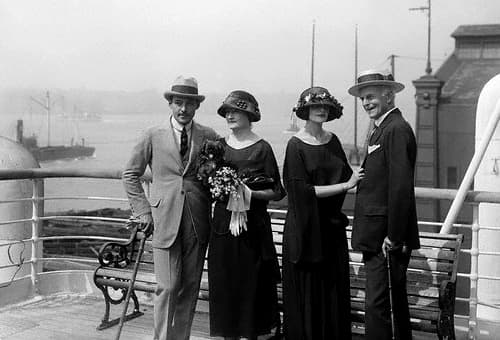
Above: 1922 Left to right: Rudolf Valentino [1895-1926], Mrs. Winifred Hudnut [1871-1957], Mrs. Natacha Valentino [1897-1966], a.k.a. Natacha Rambova, and Richard Hudnut on the deck of the Olympic steamship on the eve of its departure from New York to Europe.
Richard Hudnut would spend much his remaining years at the Château Juan-les-Pins on the French Riviera, a residence he had purchased in 1914.
William R. Warner
The William R. Warner & Company was established by William Richard Warner [1856-1901] in Philadelphia. After Warner graduated from the Philadelphia College of Pharmacy in 1856 he opened a drug store at Second and Girard Avenue. In 1857, he became the first person to manufacture sugar-coated pills in America and, after purchasing a wholesale drug business, established William R. Warner & Company in 1866. After his death in 1901, the business passed into the hands of his son, William R. Warner Jr. [1859-1942].
In 1908, William R. Warner & Company was incorporated under the laws of Pennsylvania with a capital stock of US$500,000. The incorporators were William R. Warner, Jr., of William R. Warner, Philadephia and Gustavus A. Pfeiffer and Henry Pfeiffer of the Pfeiffer Chemical Company, St. Louis. William R. Warner Jr. was made president of the company with Henry Pfeiffer as vice-president and Gustavus Pfeiffer as secretary and treasurer. This situation continued until 1916 when Henry Pfeiffer became president, Gustavus Pfeiffer treasurer, and William R. Warner Jr. vice-president. By then, William R. Warner was a large company.
After buying Richard Hudnut in 1916, William R. Warner abandoned a new building it was in the process of construction in Philadelphia and purchased the former Altman Building at 110-125 West 19th Street, New York along with some adjacent property for about US$1.1 million in cash. The building at 115-117 East 29th Street was also leased from Richard Hudnut but it became surplus to requirements and Richard Hudnut sold it in 1920 through the Hudnut Realty Company, established by him some years previously.
In 1917, William R. Warner moved its headquarters to New York City by which time the Richard Hudnut company was back in retail. In December, 1916, a new Richard Hudnut perfume shop had been opened at 400 Fifth Avenue, New York, subsequently moved to 392 Fifth Avenue in 1921.
Timeline
| 1880 | Richard Hudnut begins selling perfumes from Hudnut’s Pharmacy owned by this father, Alexander Hudnut. |
| 1889 | Richard Hudnut Pharmacy Company established at 925 Broadway, New York. |
| 1896 | New Products: Violet Sec perfume. |
| 1898 | New Products: Yanky Clover perfume. |
| 1900 | New Products: Du Barry perfume, sachet and toilet water. |
| 1902 | New Products: Du Barry Face Powder; Marvelous Cold Cream; and Perfecto Cold Cream. |
| 1903 | New Products: Nailustre. |
| 1905 | Manufacturing facilities and offices built at 115-117 East 29th Street. |
| 1909 | Richard Hudnut Pharmacy Company incorporates. English agent appointed. |
| 1911 | Richard Hudnut leases two floors in the Bush Terminal Company Building on East 29th Street. |
| 1912 | Richard Hudnut opens a branch office at 22 Rue Augustine, Paris. |
| 1914 | Richard Hudnut Pharmacy at 925 Broadway closed. New Products: Nailstic. |
| 1915 | New Products: Three Flowers perfume. |
| 1916 | Richard Hudnut sold to H. Pfeiffer, G. A. Pfeiffer and G. D. Merner. Perfume Shop opens at 400 Fifth Avenue, New York. Richard Hudnut retires. |
| 1917 | William R. Warner moves to 113-127 West 18th Street, New York. |
Continue to: Richard Hudnut (1920-1940)
First Posted: 9th March 2015
Last Update: 30th September 2021
Sources
The American perfumer & essential oil review. (1906-1955). New York: Robbins Perfumer Co. [etc.].
The drug and cosmetic industry. (1932-1997). New York: Harcourt Brace Jovanovich [etc.].
England, J. W. (Ed.). (1922). The first century of the Philadephia college of pharmacy. Philadelphia, PA: The Philadephia College of Pharmacy and Science.
Galloway, L., Harmon G. H., & Butler, S.R. (1911). Advertising, selling and credits. New York: Alexander Hamilton Institute.
Harrison, M. C. (1902). New York State’s prominent and progressive men. New York: The Tribune Association.
Richard Hudnut. (1910). Beauty book containing some account of marvelous cold cream with hints on proper massage (11th ed.) [Booklet]. New York: Author.
Richard Hudnut. (1915). Beauty book containing some account of marvelous cold cream and other complexion specialities [Booklet]. New York: Author.
Richard Hudnut. (1919). The secrets of beauty [Booklet]. New York: Author.
Woodhead, L. (2003). War paint: Miss Elizabeth Arden and Madame Helena Rubinstein. Their lives, their times, their rivalry. London: Virago.
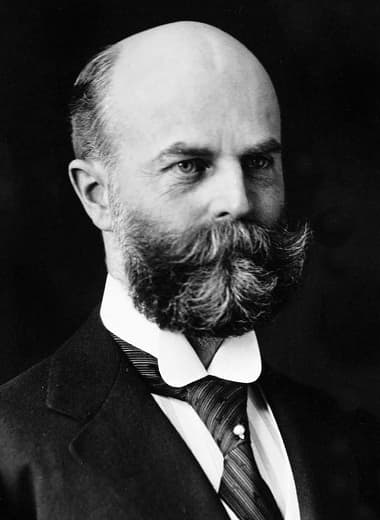
Richard Alexander Hudnut [1856-1928]. He was married twice, first to Evelyn Beals [1863-1919] in 1881, then to Mrs. Winifred A. DeWolfe [1871-1957] in 1920.
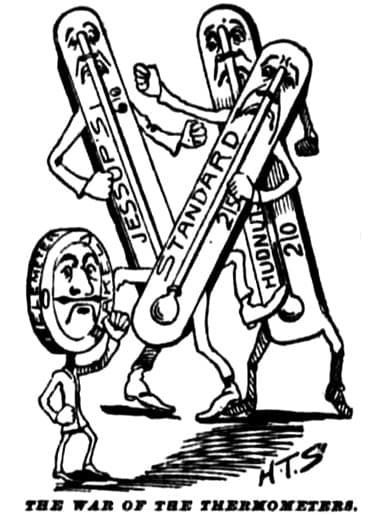
1888 The War of the Thermometers. A number of New York pharmacies had their conflicting thermometer readings published on a daily basis.
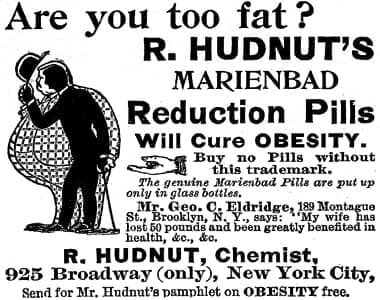
1893 Richard Hudnut Marienbad Reduction Pills.
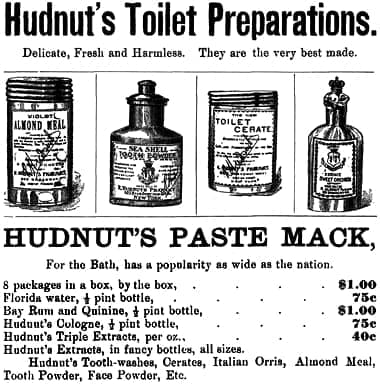
1894 Richard Hudnut. To distinguish its products from preparations produced or sold by Hudnut’s Pharmacy, the packages were clearly labelled with R. Hudnut Pharmacy, the 925 Broadway address, and Richard Hudnut’s signature, trademarked in 1911.
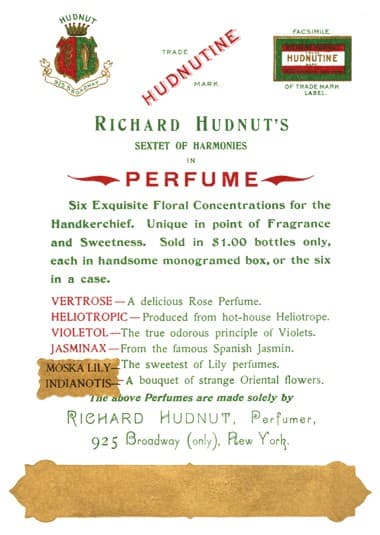
The back of a Richard Hudnut Trade Card showing the use of the Hudnutine, trademarked in 1893.
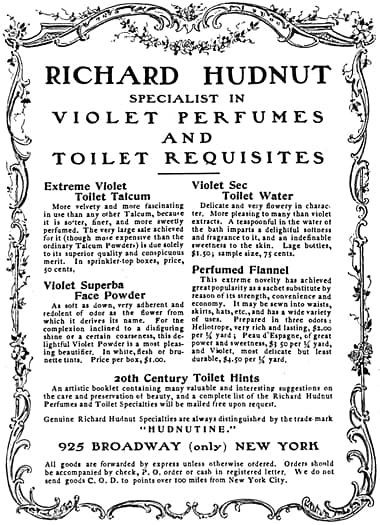
1900 Richard Hudnut.

1906 Richard Hudnut products sold through Lewis & Co., Honolulu.
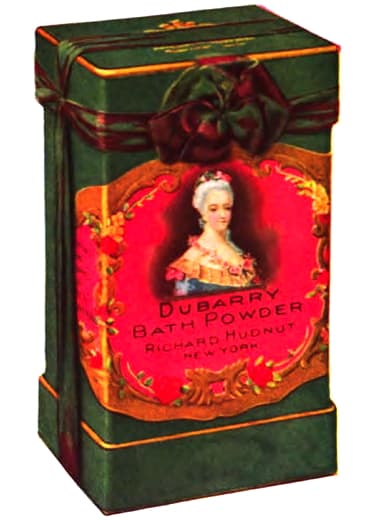
c.1907 Richard Hudnut Du Barry Bath Powder which was used like bath crystals.
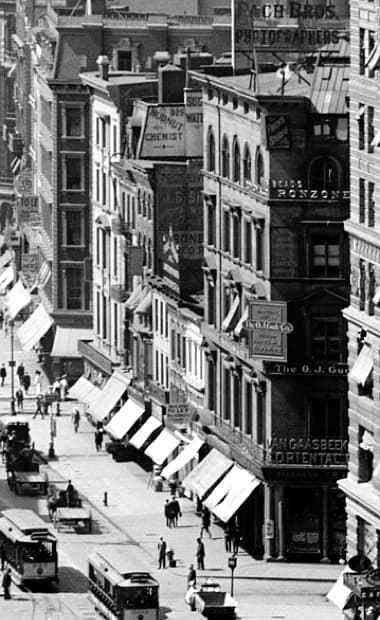
1909 Richard Hudnut at 925 Broadway, New York with a sign on the top of the building. The windows on the extreme right are part of the ‘Flat Iron’ Building.
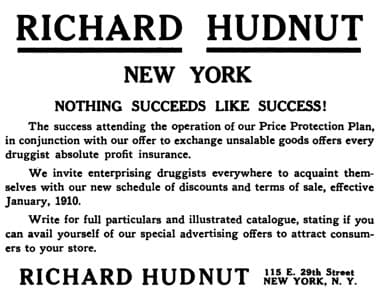
1910 Richard Hudnut Price Protection Plan.
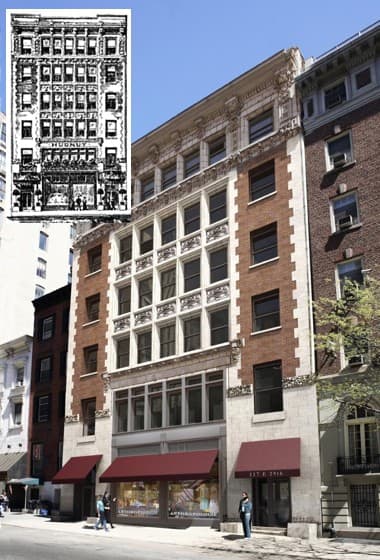
The Hudnut Building at 115-117 East 29th Street, New York. Architect: Henry Ivea Cobb [1859-1931]. It still stands today as an apartment block. The inset drawing of the original building shows that the facade on the ground floor and some of the windows have been altered. Richard Hudnut sold the building through his Hudnut Reality company in 1920.
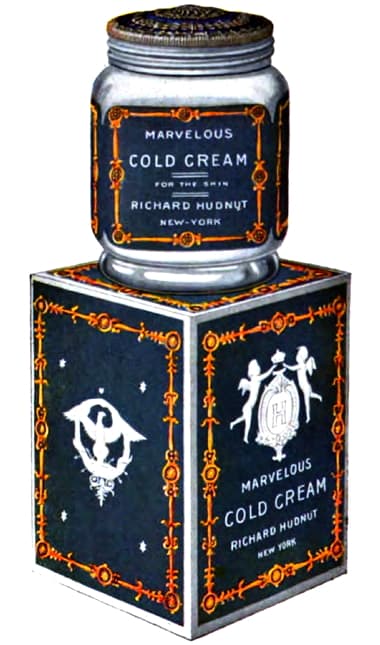
Richard Hudnut Marvelous Cold Cream.
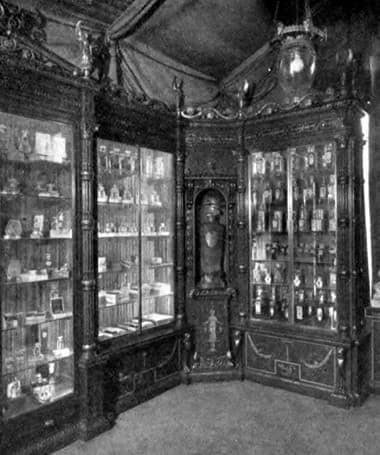
Interior of the Richard Hudnut showroom at the Bush Terminal Building York designed by G. A. and H. Boehm.
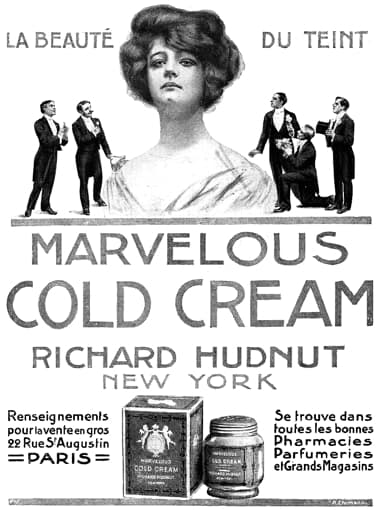
1913 Richard Hudnut Marvelous Cold Cream (France).

1914 Hudnut’s Marvelous Cold Cream (Crème Américaine) sold through Feret (France).
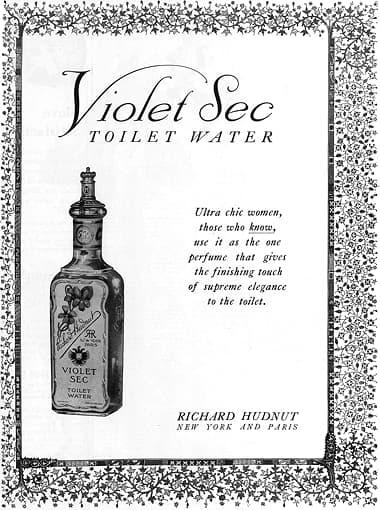
1914 Richard Hudnut Violet Sec Toilet Water. The first product to be widely promoted by Richard Hudnut in the United States after the company began general advertising.

1914 Hudnut’s Marvelous Cold Cream (Germany).

1916 Hudnut’s Marvelous Cold Cream. A trademark for the word ‘Marvelous’ had been granted on the grounds that there was nothing about cold cream to excite astonishment.
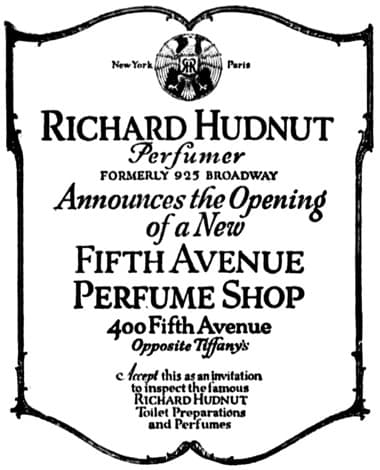
1916 Richard Hudnut opens a new retail shop at 400 Fifth Avenue, New York.

Display case, in grey enamelled woodwork, at the Richard Hudnut store at 400 Fifth Avenue, New York designed by George A. Boehm [1874-1959] and Henry Boehm [1879-1959].
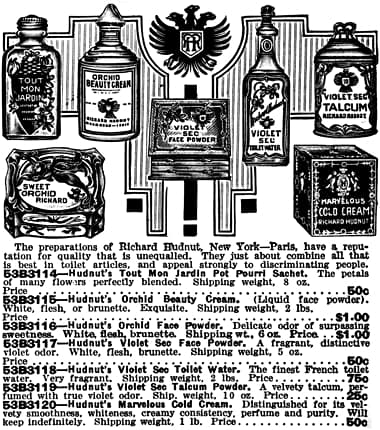
1916 Richard Hudnut products advertised in a Montgomery Ward catalogue.
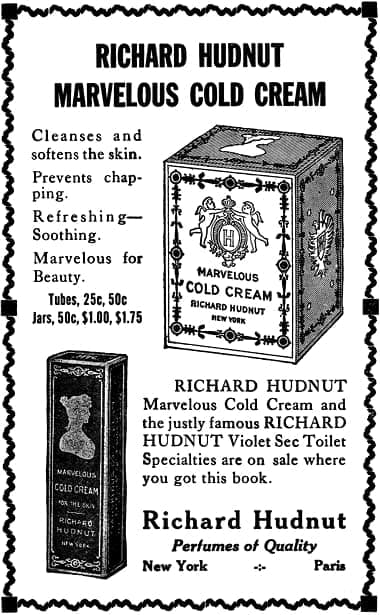
1917 Richard Hudnut Marvelous Cold Cream, sold in jars and tubes.

1919 Richard Hudnut Nailstic, Nailustre, Liquid Nail Enamel, and Orange Wood Sticks.
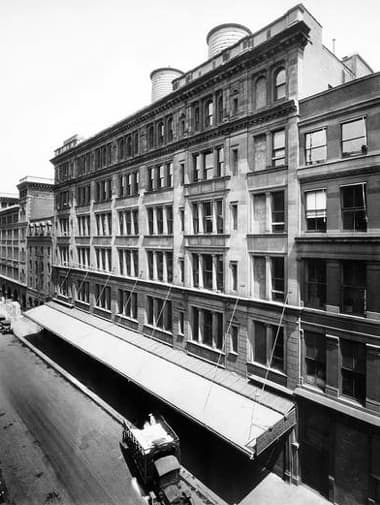
1929 William R. Warner at 113-25 West 18th Street. Part of the complex of buildings that bordered 6th Avenue between West 18th and West 19th Streets.
